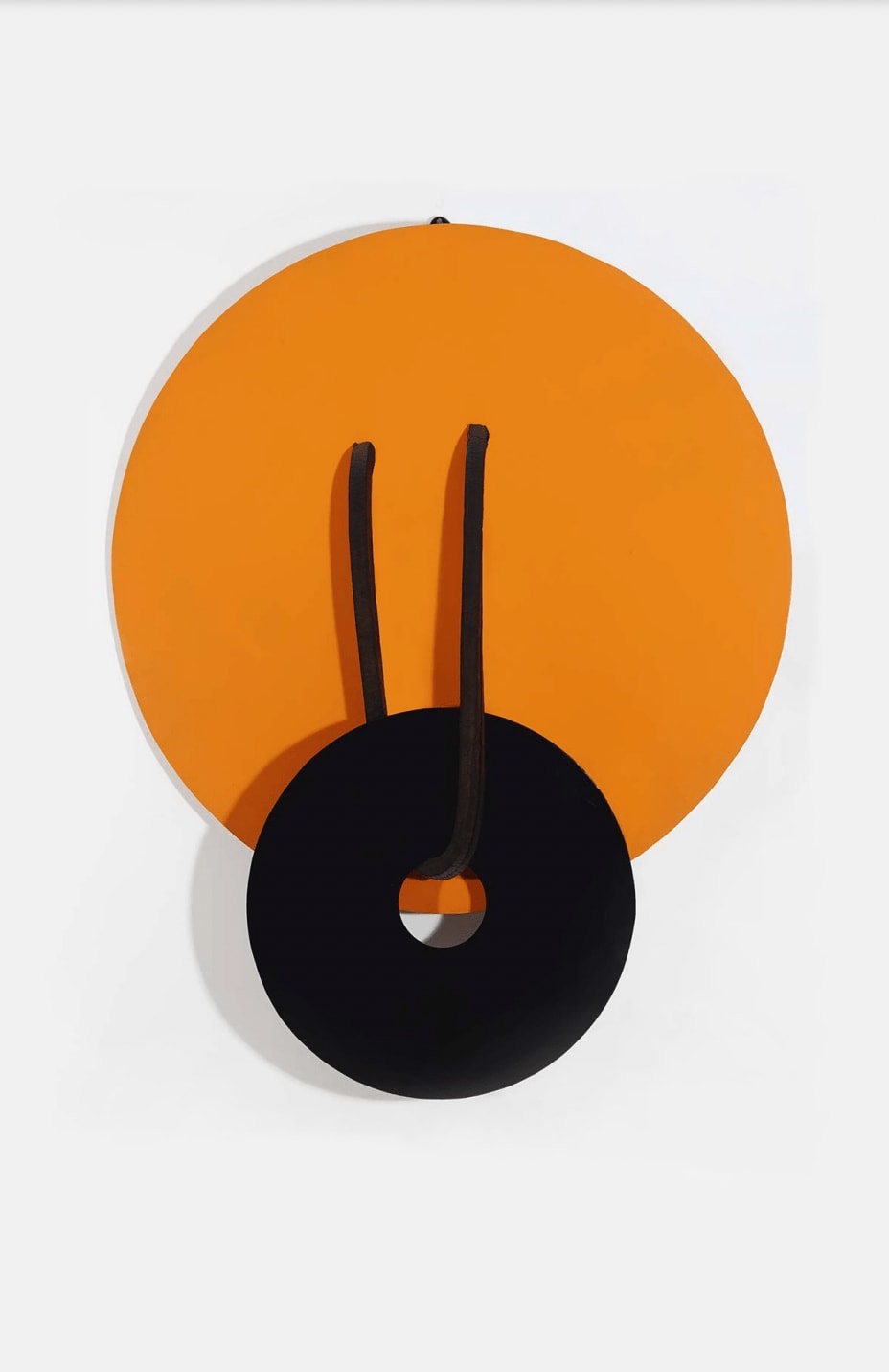Lygia Pape
Amazonino Redondo, 1992
iron, industrial paint and rubber
ferro, tinta automotiva e borracha
ferro, tinta automotiva e borracha
150 x 100 cm
59 x 39 3/8 in
59 x 39 3/8 in
Lygia Pape is a key artist of the generation who expanded the experimental field of art in the second half of the 20th century, participating in both the Groupo Frente...
Lygia Pape is a key artist of the generation who expanded the experimental field of art in the second half of the 20th century, participating in both the Groupo Frente and the Neoconcrete Movement. With the motto “poetic space — any language at the service of the ethical", Pape discussed the contradictions of Brazilian society that, in its polyphony, converges precariousness and vivacity. Part of its approach to social reality implied a critical review of the anthropophagic proposition of the modernist generation of the 1920s.
Pape seems to have realized that the original presence of the anthropophagic practices recorded by the colonizers — from the Tupinambá indigenous culture — had turned into an uncomfortable contemporary fault, since it was no longer seen in the occupation of Guanabara Bay, but by some impalpable identity reminiscence.
In the Amazoninos series, Pape plays with arrangements of large iron wall-mounted sculptures that derive their names, colors, and shapes from an aerial view of the Amazon forest — which balances weights and bends in abstractions, loaded with evocations of the Amazonian flora. The works appear to spring forth from the walls, eliding the weight of their industrial composition and seeming both geometric and organic.
These works synthesize Pape’s ongoing explorations of space, volume, color and form, and when these sets are gathered, they reveal themselves as phantasmagorias that converge Pape's experimentalism with scars of the colonial genocide.
/
"Amazonino" is a work of art created by Lygia Pape. It's a part of her "Ttéia" series, which consists of installations made from golden threads. "Amazonino" specifically represents the Amazon Rainforest. The installation is constructed with delicate threads arranged in a network of interconnected lines that evoke the intricate and interconnected nature of the rainforest ecosystem. The threads create a visual web that alludes to the complex relationships between the flora, fauna, and environment of the Amazon. "Amazonino" is a reflection of Pape's exploration of space, light, and form, inviting viewers to contemplate the beauty and fragility of the natural world.
Pape seems to have realized that the original presence of the anthropophagic practices recorded by the colonizers — from the Tupinambá indigenous culture — had turned into an uncomfortable contemporary fault, since it was no longer seen in the occupation of Guanabara Bay, but by some impalpable identity reminiscence.
In the Amazoninos series, Pape plays with arrangements of large iron wall-mounted sculptures that derive their names, colors, and shapes from an aerial view of the Amazon forest — which balances weights and bends in abstractions, loaded with evocations of the Amazonian flora. The works appear to spring forth from the walls, eliding the weight of their industrial composition and seeming both geometric and organic.
These works synthesize Pape’s ongoing explorations of space, volume, color and form, and when these sets are gathered, they reveal themselves as phantasmagorias that converge Pape's experimentalism with scars of the colonial genocide.
/
"Amazonino" is a work of art created by Lygia Pape. It's a part of her "Ttéia" series, which consists of installations made from golden threads. "Amazonino" specifically represents the Amazon Rainforest. The installation is constructed with delicate threads arranged in a network of interconnected lines that evoke the intricate and interconnected nature of the rainforest ecosystem. The threads create a visual web that alludes to the complex relationships between the flora, fauna, and environment of the Amazon. "Amazonino" is a reflection of Pape's exploration of space, light, and form, inviting viewers to contemplate the beauty and fragility of the natural world.
